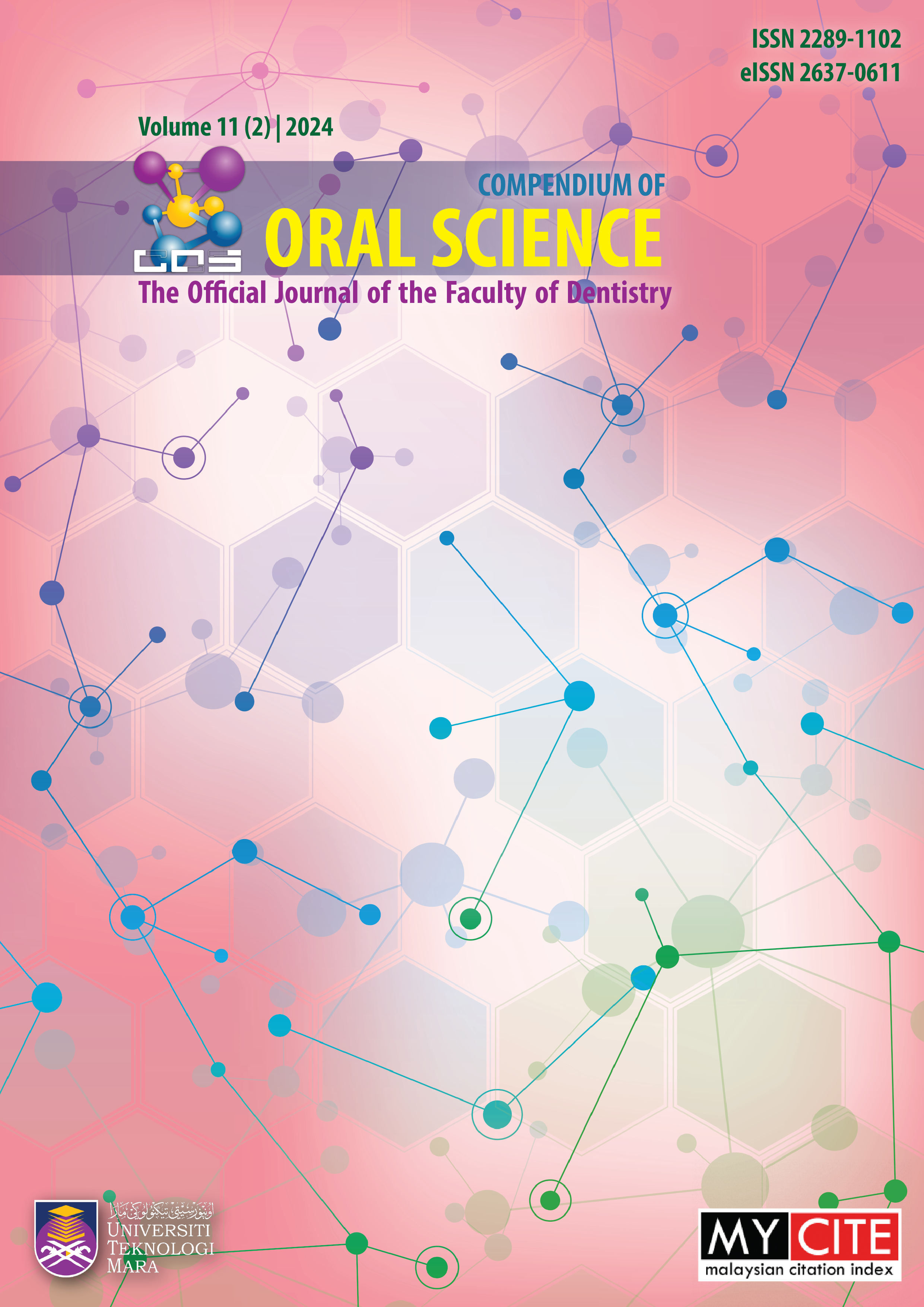Review of Materials for the Fabrication of Microparticles in the Context of Bone Tissue Engineering
DOI:
https://doi.org/10.24191/cos.v11i2.27498Keywords:
natural polymer, synthetic polymer, composite, mechanical properties, bone tissue engineering, Nano SiO2Abstract
Bone tissue engineering (BTE) is a rapidly advancing field that seeks to repair or regenerate damaged or diseased bone tissue. Microparticles play an increasingly significant role in BTE by serving as drug delivery systems, cellular carriers, and scaffold components. This review aims to provide a comprehensive understanding of the variety of materials used in the fabrication of microparticles for bone tissue engineering applications. Natural polymers discussed include chitosan, collagen, gelatin, hydroxyapatite (HA), and silk fibroin, each offering unique biocompatibility and biochemical properties. Synthetic polymers such as ceramics, poly (lactic acid) (PLA), poly (lactic-co-glycolic acid) (PLGA), polyethylene glycol (PEG), and polycaprolactone (PCL) offer advantages in terms of mechanical stability and controlled degradation. The review also explores composite materials that combine the strengths of natural and synthetic polymers for enhanced biocompatibility, mechanical strength, and bioactivity. The functionalization and surface modification of these microparticles to meet specific requirements in bone tissue engineering are additionally covered. The objective is to guide researchers in selecting the most appropriate materials for specific applications within the realm of bone tissue engineering, considering factors such as biocompatibility, mechanical properties, and bioactivity.
Downloads
Published
How to Cite
Issue
Section
License
Copyright (c) 2024 Compendium of Oral Science

This work is licensed under a Creative Commons Attribution-NonCommercial 4.0 International License.
Materials contained in the journal may be reproduced for educational purposes provided that both the author(s) and the journal are appropriately recognised; otherwise duplication is not permitted. No articles, reports, or portions there of may be translated into other languages, published in books, journals, magazines, or any other print form without written permission from the authors and from the journal.
Disclaimer: The statements, opinions and data expressed in the articles and reports herein are those of the author(s) and not of the publisher and the editor(s). The publisher and the editor(s) disclaim responsibility for any injury to persons or property resulting from any schemes, methods, instructions or ideas referred to in the content.















